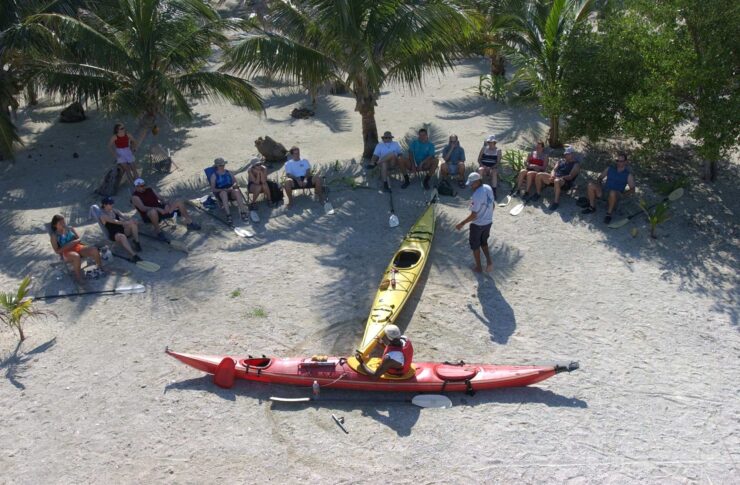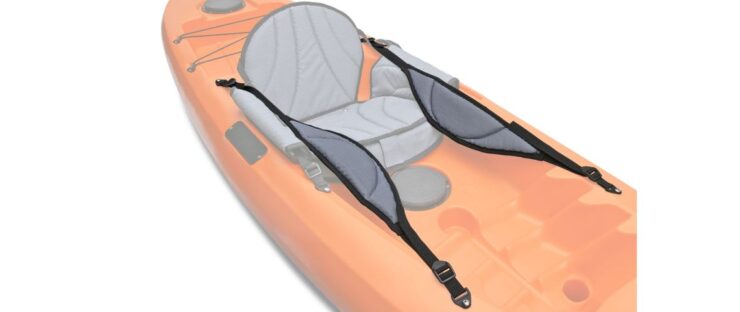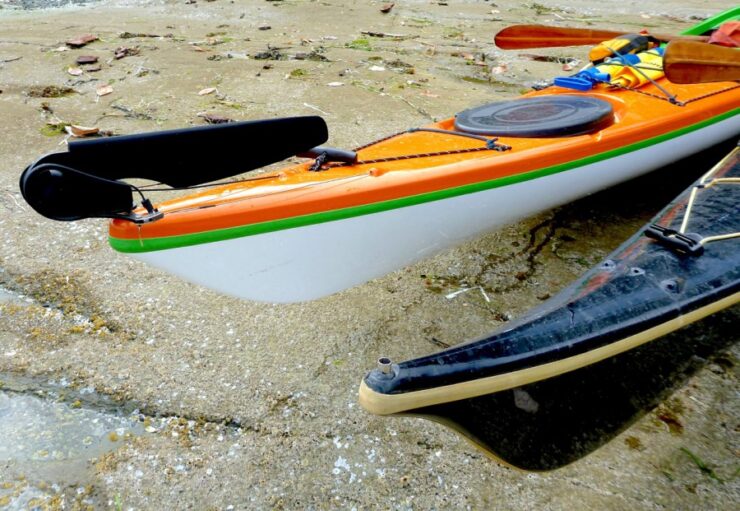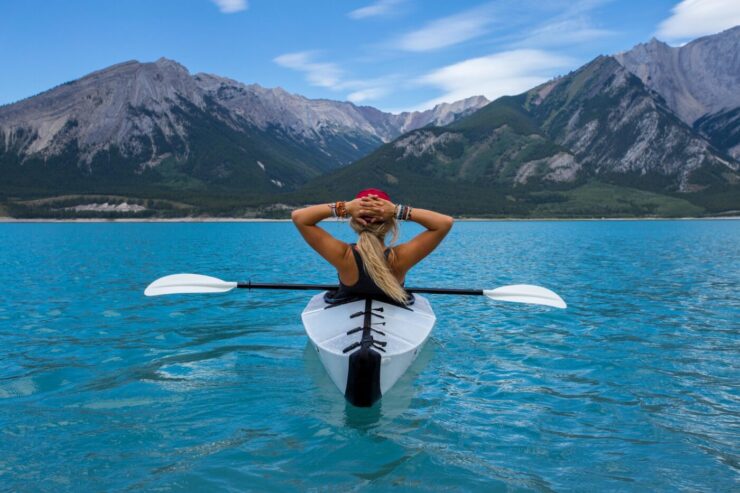So, you’ve decided you want to go kayaking. Maybe someone has invited you or maybe just the thought of catching fish from a kayak sounds like fun and here you are reading this article and wondering how exactly do I get started?
Kayaking is one of those great pastimes that can be enjoyed by the whole family – young and old – as it is especially easy to learn. It brings an added awareness and appreciation for nature because we see our surroundings (and often ourselves) in such a different way than we would if we were on land.
The sport also provides exercise, builds strength and endurance, gives us time to think about things other than work-related issues or deadlines, and introduces us to new friends.
Kayaking has become very popular over the past two decades. The sport is easy to learn but takes time to master. We all have different abilities, strengths and weaknesses, so it would be unfair for me to try and prescribe a set of skills and techniques that everyone must acquire in order to be classified as a “kayaker.”
However, there are certain essential skills every kayak angler should know before heading out on the water. These skills can vary slightly depending on whether you’re fishing from a sit-on-top or fishing from a sit-inside kayak, although most of these skills apply equally well no matter which kind of kayak you happen to own.
Table of Contents
Toggle1. Paddle Float
If you’ve never used a paddle float on your kayak, you’ll be surprised how handy this small piece of equipment can be. If you flip your kayak over (and let’s hope that never happens), the paddle is one of the best tools to use to right yourself.
Simply slip the strap around the lower end of your paddle shaft and then reach down with both hands to grab hold of it (one hand on each side of the strap) and give it a good tug. Your blade should come out of the water with no problem at all. You may have to fiddle around with positioning until you get it just right but once you do, re-entry is made very easy by using this device alone.
2. T-rescue

This is another easy and effective method for getting back into your kayak. Keep a good hold on the end of the paddle as you’d been doing with the strap from your paddle float, then flip it inside out by grabbing the blade end instead of the handle end. This is rarely seen as necessary but an important skill to know nevertheless.
3. Backband / thigh hooks

Once you’ve got your kayak going in a forward direction there’s nothing worse than having to stop or turn around because you don’t have enough upper body strength to make a quick 180 degree pivot without either putting yourself at risk of flipping over backwards or ending up halfway out of your kayak – neither one being particularly desirable!
Having knee thigh hooks installed into your seat will give you the extra leverage needed to turn around easily. If you don’t yet have thigh hooks, tie a short length of shock cord long enough to stretch across your kayak between the two backrests and then tie it off on each side to your knee braces or wherever else is convenient. You can adjust it later for comfort but make sure there’s enough tension in the cord so that it doesn’t slip around too much during use.
4. Spray skirts
A lot of anglers go out without installing their spray skirts because they think they’re not necessary. They are very useful though – keeping you nice and dry, especially if it begins to rain. Even if water does start to enter your cockpit area through the scuppers (the holes built into the kayak’s floor to allow water to drain out), a good spray skirt should keep it all inside and prevent you from sinking.
If you’re new to kayaking and your first experience involves taking on water, you may never want to go back out again but having a spray skirt installed will make things much more manageable. Be sure to buy one that’s suitable for your particular kayak – some are known as “one-size fits all” (OSFA) whereas others need to be ordered specifically for the model of kayak they’re designed to fit.
5. Rudder

Although not essential, a rudder can come in very handy if there’s enough wind or current present that tends to push your kayak from side to side, especially if you’re fishing from a sit-inside kayak.
It’s possible to increase the amount of effort required for turning by tightening down on one or both foot pedals but a rudder makes it much easier and more efficient while keeping your hands free to manage the paddle.
6. Fishfinder
Kayaks are amazing little boats. They allow us to sneak into otherwise unreachable spots that no other type of boat could even come close to reaching, places where larger watercraft would be unable to navigate through tight channels or around heavily wooded areas.
More often than not, however, all we can see from port is open water with nothing in sight, making it seem like there’s nothing else out there worth fishing. With a little help from our modern fishing electronics, we can actually see what lies beneath the surface and plan accordingly.
Instead of casting blindly out to open water and hoping for the best, we know exactly where to go and how deep the structure below us is before even getting there.
That’s it! Once you’ve got all that installed into your kayak, you’ll be ready to hit the water in comfort and style. Make sure you’re dressed appropriately too – nothing ruins a day out on the water like an unexpected cold snap or an untimely sunburn! Stay safe and happy fishing!
Adelaide Gentry, a seasoned kayaking enthusiast and expert, is the driving force behind KayakPaddling.net. With over a decade of experience navigating the world’s most challenging waterways, Adelaide combines her passion for adventure with a deep knowledge of kayaking to provide insightful and practical guidance for paddlers of all levels.
Related Posts:
- 16 Best Kayak For Beginners 2024 - Kayaking Adventure Gear
- Heavy Duty Fishing: 11 Best Rods And Reels For Big Fish 2024
- 10 Best Inflatable Kayak 2024 - Rivers, Lakes & Open Seas
- 12 Best Beach Wagons & Carts 2024 - For All-Terrain
- 10 Best Kayaks For Camping 2024 - Lightweight and…
- 12 Best Motorized Kayak 2024 - Start Your Aquatic Adventure!












